Every time I step foot in the back alley behind my apartment in China I can’t help but smile. The strong aroma of grilled lamb mixes pleasantly with the sound of noodles being slap-stretched on a table, every part of it reminding me that although I am technically in China the cuisine here is far from what most people consider “Chinese”. Ever since 2006 the region of Xinjiang – the largest and westernmost in China – has been my home. People always ask me why I decided to move way out in the middle of nowhere instead of somewhere along China’s bustling east coast and I always respond with two reasons: the people…and the food.
The further west you travel in China the more ethnic minorities you’re bound to run into; people like the Hui, Uyghur, Kazakh, Mongol and Tajik among many others. Not only are these people incredibly hospitable and interesting to speak with (many, but not all, speak Mandarin), there’s no better way to experience their culture than to sit down and eat an authentic meal. Whether you’re able to journey as far west as my home here in Xinjiang or you never make it past the famous Xi’an Muslim Quarter, this foodie’s guide to China’s west will give you a good idea of the best foods to try.
Quick Navigation
ToggleHui Food
As the largest minority group of the 56 recognized by China, the Hui people stretch along a large swath of China’s northwest, from Xi’an to Xinjiang. Often referred to as “Chinese Muslims”, their most notable contribution to Chinese cuisine is an incredible dish known as DaPanJi.
DaPanJi | “Big Plate Chicken”
Describing this dish really isn’t that hard because, well, it basically describes itself! It’s a big plate of chicken. But we’re not just talking about the chicken breast here; it’s the entire chicken
If you can get past that small detail, though, it’s an incredible tasty dish. It’s often cooked with potatoes and onions in a spicy red sauce and because of its size is usually shared among a group of four or more people.
I always tell anybody who eats DaPanJi to remember two important things to complete the experience: order naan (local break) to dip in the plate during the meal and finish it off by asking for some flat noodles to soak up the remaining sauce.
Uyghur Food
The Uyghur people of China make up almost half of Xinjiang’s population and have a heavy influence on the region, particularly the south. Unfortunately they’ve been branded with a negative image thanks to some ethnic tension but you’ll find that they really are nice people and their food is incredible.
KaoRou and Naan | “Lamb Kebabs & Bread”
You can’t walk more than 50 meters in Xinjiang on a summer evening without running into a kebab stand. I’ve had my share of kaorou in cities like Beijing and Shanghai, but trust me when I say that it’s nothing compared to what you can find on the streets here.
A skewer of lamb, alternating between meat and fat, is grilled to perfection and seasoned with both cumin and some sort of red pepper mixture. The oil from the kebabs can be put to good use when served on top of Uyghur flat bread that soaks in the flavor.
While it’s entirely possible to make a meal out just kebabs, I prefer to order a few in addition to some other dish I plan to eat.
Polo | “Uyghur Pilaf”
Rice pilaf is a common dish all throughout Central Asia and the Uyghur have developed their unique version. For the Uyghur, the rice is cooked together with different variety of carrots and sometimes even some delicious local raisins. It is then topped with a good portion of their famous lamb in the form of either bone-in chunks or small boneless pieces depending on where you go. Uyghur polo is almost always served with a small side of carrot or cucumber salad in vinegar which many people, including myself, enjoy eating together with the polo instead of separately.
LaMian | “Uyghur Laghman”
Whereas the Chinese staple food is rice, the Uyghur staple is noodles. One of the most fascinating phenomenon to witness is the creation of these noodles which are first rolled out and then stretched by hand in a series of throws and table slaps. Laghman is a dish that combines these long noodles with a topping of mutton meat and vegetables in soy sauce or black vinegar. It sounds pretty basic – and it is – but the result is incredibly delicious. There are a few different variations of laghman so don’t be surprised if you’re at a restaurant and they ask you “what kind” you want. If that happens, just tell them you want “meat and vegetables”.
Kazakh Food
Although they don’t make up a large portion of China’s population there are parts of western China, particularly the border regions, which are almost 90% Kazakh. Best known for their nomadic lifestyle, the Chinese Kazakh also distinguish themselves by serving one kind of meat nobody else does: horse meat.
Kazakh Beshbarmak (Horse Meat Dish)
The funny thing about horse meat is that, at least in my experience, it’s hard to tell the difference between it and any other kind of sausage when eaten. It’s an expensive meat but the local Kazakhs believe that it provides physical strength and promotes health, especially during the cold of the winter. In this customary Kazakh dish, the horse sausage is sliced into thin pieces and served either on a bit plate or in a soup (which then becomes called “Narin”). The meat is usually missed with noodles, onions assorted other vegetables.
Author’s Bio:
Josh has lived and traveled all over China since 2006. He currently resides in Urumqi, capital of the Xinjiang region, where he continues to explore the natural beauty, cultural diversity and culinary gems of China. He loves writing and shares what he’s learned about travel in China on his Travel China Cheaper site.

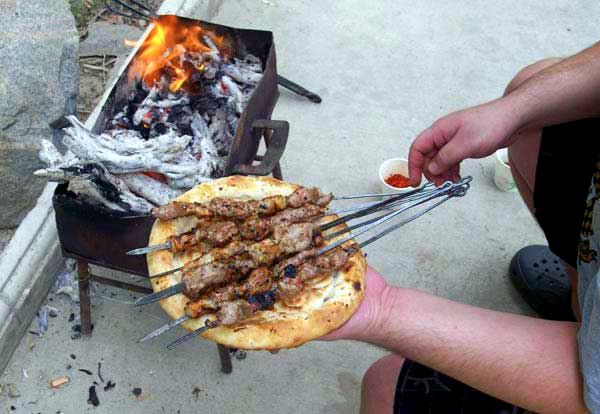
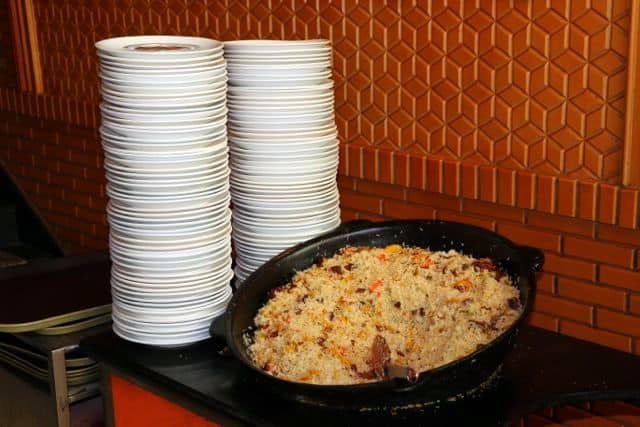


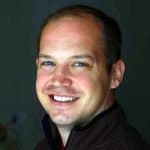
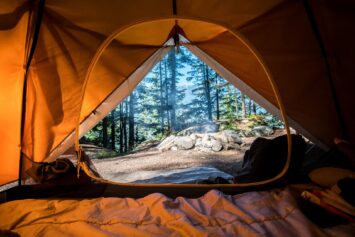
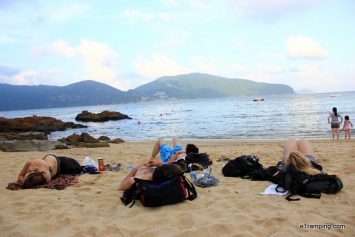

51 thoughts on “Foodie’s Guide To Western China”
I LOVE reading food posts, great guide!! The food is a lot different than I was expecting in western China. It all looks delicious, although I’m not sure IO’d go for the horse meat! :)
Hey Katie! I think you’d be surprised about the horse meat. Once you get over the fact that it’s a horse it tastes a lot like any other sausage meat. It’s just a mind game :)
I even tried dog meat, so nothing would surprise me!
Me and you are such foodies, Katie! :D
DaPanJie is literally the main reason I want to go back to China one day! Eaten pretty much everything else on this list too and can concur at the awesome tastiness of it all :)
I agree Bennett! DaPanJi pretty much tops this list for me as well.
You must be missing DaPanJie a lot right now I guess :).
I love China’s diversity and the many delicious food. I go to a hui noodle shop pretty constantly and never get tired of watching them make noodles. I’d love to make it out to Xinjiang at some point- its seems so unique
I hope you’re able to make it out sometime, Rebekah! I don’t think you’d regret any amount of time you spend here in Xinjiang.
Let me know when you’re headed that way. I’ll be happy to answer any questions you have :)
Me too, totally!
Xinjiang is probably my favorite region of China and a big reason for that is the food. They grow a lot of fruit in the region, too, despite being mostly desert and I finished every meal off with some fresh melon. I think it made me feel better about scarfing down a kg of lamb for dinner.
So true about the melon. I would also add that Uyghur ice cream is an incredible way to wash down a spicy meal here in Xinjiang! Have you ever had that before?
I haven’t, really regret that though.
I didn’t even know Uighur ice cream was a thing…I’m not generally a big ice cream fan, but I definitely would have tried some if I had known about it.
Great to hear that, Daniel!
Chinese food is one of my favourite!
I must admit I like all the meat they serve in Central Asia! That rice pilaf stuff is everywhere, usually with meat on top (can be horse meat too) and that’s known as ‘plov’ which I had in both Kazakhstan and Kyrgyzstan. I think I’d like the west Chinese cuisine. Nice work.
Thanks for the kind words, Andrew! Out here you can actually get a few different styles of the “plov” or “pilaf”. The Uyghur is the most common, of course, but there are some places around that serve Tajik, Kazakh and Kyrgyz styles. I like the variety :)
Thanks Andrew!
Everything looks so good! I LOVE the lamb sticks in China! :D They’re always my favorite snack whenever I visit. But besides that, I’m not too familiar with Western China cuisine (I’m originally from Beijing). It looks like such an interesting mix between some traditional Chinese dishes and middle eastern/Indian. I would love to visit that part of China some day!!
Next time you’re in Beijing you should find a “Xinjiang restaurant” to visit. It’s not quite the same, but it will hold you over until you get a chance to come out here personally!
I know! My mouth is watering :)!!
I’ve never made it to Xinjiang despite being in China for 18 years. One day. One day.
However, I have eaten almost everything you list. Thankfully there are good Xinjiang restaurants all over China.
But I’m sure it’s not the same experience as actually being there. French food tastes better in France; Italian in Italy etc.
You have been in China for over 18 years? Wow! That’s so impressive!
You should definitely come! It is exactly as you expect in my opinion: the food here will be so much better than what you’ve had in the Xinjiang restaurants around China.
There are some pretty tasty looking dishes there! I could go for that massive plate of chicken or those lamb skewers!
They taste as good as they look, Chanel, I promise you that! ;)
All of them look so yummy, indeed!
Mmm, that rice pilaf is right up my alley!!!
YUM! This brings back so many delicious memories of my time in China. While I sadly never made it to Xinjiang, Shanghai had some excellent Uyghur restaurants that I would frequent often. Now I want an order of Big Plate Chicken!
YES!!! I loved Chicken dishes in China.
I’m glad you were able to experience the Uyghur restaurants in Shanghai, Heather! Hopefully next time you’re in China you’ll have a chance to come out here to Xinjiang.
Agness…love it! Josh, I’ve wanted to go to Urumqi for a long time for all the reason you mention…especially the food. Is there a lot of snow in the winter?
Hey Corinne, thanks for the comment! Yea, it does get pretty cold in the winter and snows often. We’re located between two parts of the TianShan range so that dictates a lot of our weather.
In Dongguan, where I used to live, there was not much snow (almost no snow), but I’m curious about Western China. Tell us something about it, Josh :).
Love western China – the fusion of Chinese and Muslim culture is truly intoxicating, and it’s a region I’d love to get back to. And that food is making my mouth water – I must find a Uyghur restaurant in Melbourne!! :D
Me too!
Interesting to learn that Western China’s cuisine is so unique to those mainstream Chinese food that are so familiar to most. Truly fascinating mix of influences from bordering land. Didn’t realize that they’re big in pilaf. Dying to try the Ughyur Pilar right now.
Did you guys enjoy Chinese food recently?
Amazing post! I was so happy to see the Uyghur Food – I lived of it when I was in Beijing and I haven’t seen it anywhere else in China. I could go back just for the lamb kebab!
Stunning food & such a good read getting to know regional food. It seems its incredibly different from region to region too.
It is very different than what you would think of as ‘typical’ Chinese food. But I guess like any big country, it varies form region to region. I would love to sample all the dishes, but the I am not sure about the horse one through.
I’m a big fan of Chinese food. OMG, I could eat it all day long!
Me too! :)
I love this type of food and would love to visit this far western part of China. Those kebabs look so delicious and I can imagine how the bread would soak up all of those lovely flavours. I love the ethnic tribes we met in Vietnam and would like to experience them in China as well.
Chinese kebabs are extremely yummy!
But it’s all meaty dishes :( Does that mean that a vegan like me would seriously struggle with food there, or would I find something suitable for my diet?
Don’t worry Franca. I found some nice grilled veggies and a lot of vegan dishes in China too.